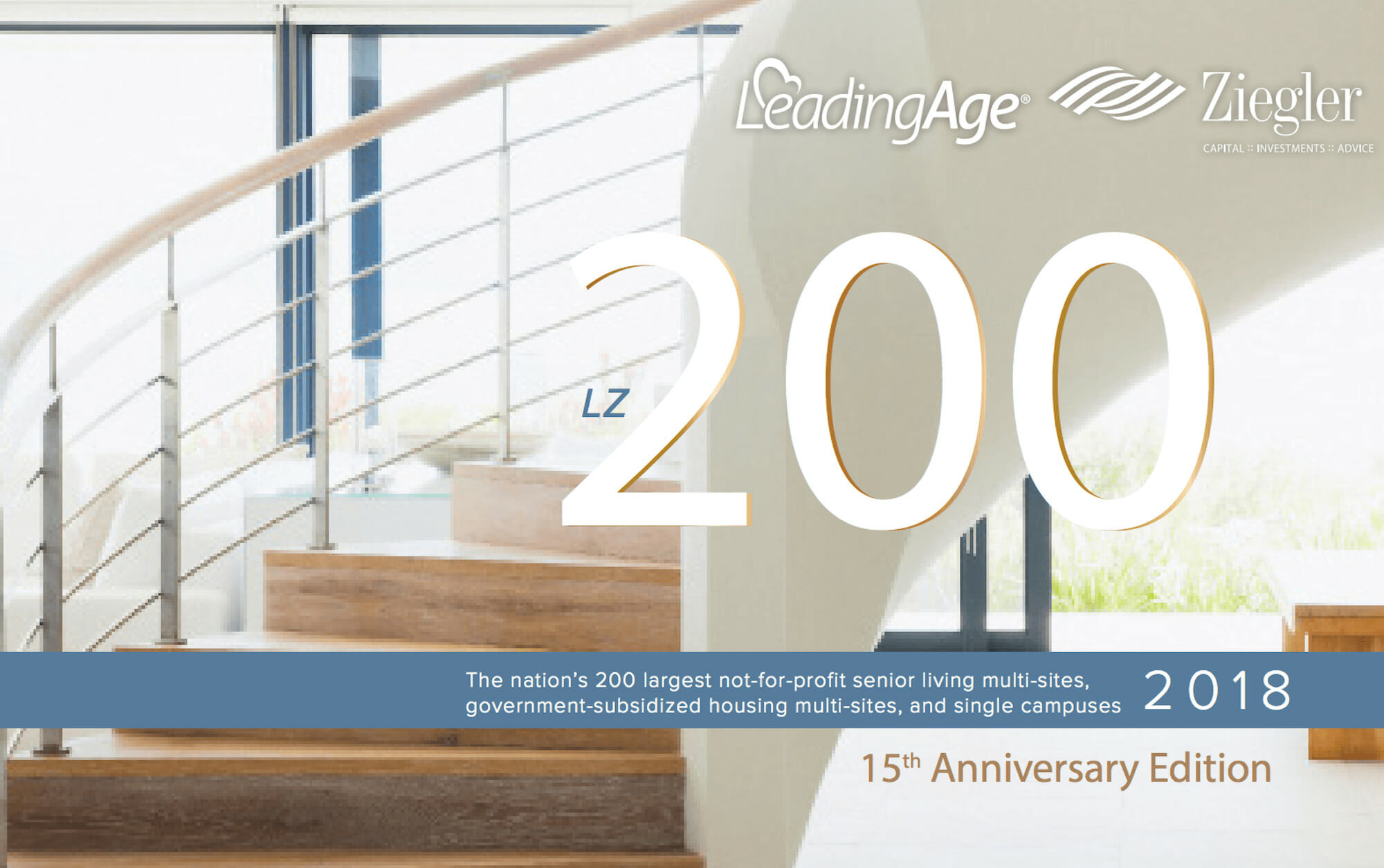
The annual LeadingAge Ziegler list of the largest not-for-profit senior living providers grew by 50 organizations and saw some changes at the top for 2018.
Renamed the LeadingAge Ziegler 200, succeeding the LeadingAge 150 (which in 2014 replaced the LeadingAge 100, which had begun in 2004), the latest report was released Tuesday and includes the list and industry trend information.
“By analyzing the country’s 200 largest senior living providers, we are able to keep a steady pulse on what is growing, shrinking and changing so the industry is prepared to adapt to the needs of seniors and provide the highest quality of care,” Ziegler President and CEO Dan Hermann said.
Organizations in the top 10 on the list remained the same for 2018 compared with 2017, although two moved up on the list and one moved down.
The 10 largest not-for-profit multi-site senior living organizations in 2018, according to LeadingAge and Ziegler, include:
- National Senior Campuses, Catonsville, MD
- The Evangelical Lutheran Good Samaritan Society, Sioux Falls, SD
- Acts Retirement Services, West Point, PA
- Presbyterian Homes and Services, Roseville, MN
- Covenant Retirement Communities, Skokie, IL (was No. 6 on the 2017 list)
- Trinity Health Senior Communities, Livonia, MI (was No. 9 on the 2017 list)
- HumanGood, Pleasanton, CA (was on the 2017 list as Cornerstone)
- Ascension Senior Living, St. Louis, MO
- Benedictine Health, Duluth, Cambridge and Shoreview, MN (was No. 5 on the 2017 list)
- Retirement Housing Foundation, Long Beach, CA
The largest not-for-profit multi-site senior living organization based on number of independent living units was National Senior Campuses, with 16,861 of its total 19,645 units being independent living units.
The largest not-for-profit multi-site senior living organization based on number of assisted living units was Presbyterian Homes and Services, with 2,299 of its total 7,433 units being assisted living units.
The largest not-for-profit multi-site senior living organization based on number of nursing care units was The Evangelical Lutheran Good Samaritan Society, with 9,995 of its total 17,343 units being nursing care units.
Some other insights:
- Over the past 10 years, the average annual growth rate in total units was 2.7%, with independent living and assisted living units growing each year and a decline occurring in nursing care beds. The average annual rate from 2000 to 2017 was 4.1% for assisted living, 3.2% for independent living and 1% for nursing care.
- Memory care units are becoming an increasingly important component of the annual unit counts. Sixty percent of operators on the LZ 200 have specialized memory care units.
- Home-based services, such as home health, continuing care at home programs or the Program for All-Inclusive Care for the Elderly, continue to grow, with approximately 45% of the LZ 200 offering some type of home- and community-based service to non-residents. The CCaH model, however, now is offered by slightly more than 12% of the LZ 200, which is 2% less than in last year’s report.
- The organization with the greatest increase in total units from 2017 to 2018 was Trinity Health Senior Communities, which added 680 units for a total of 4,878 in 2018.
- The organization with the greatest decrease in total units from 2017 to 2018 was Benedictine Health, which shed 668 units for a total of 4,602 in 2018.
- The organization with the greatest upward movement on the list from 2017 to 2018 was Heritage Ministries, Lakewood, NY, which moved up 37 spots to No. 78 this year.
- The organization with the greatest movement down the list from 2017 to 2018 was Loomis Communities, South Hadley, MA, which moved down 36 spots to No. 149 this year.
Data used in the 2018 rankings are current as of Dec. 31, 2017.
Read the whole report here (PDF).



